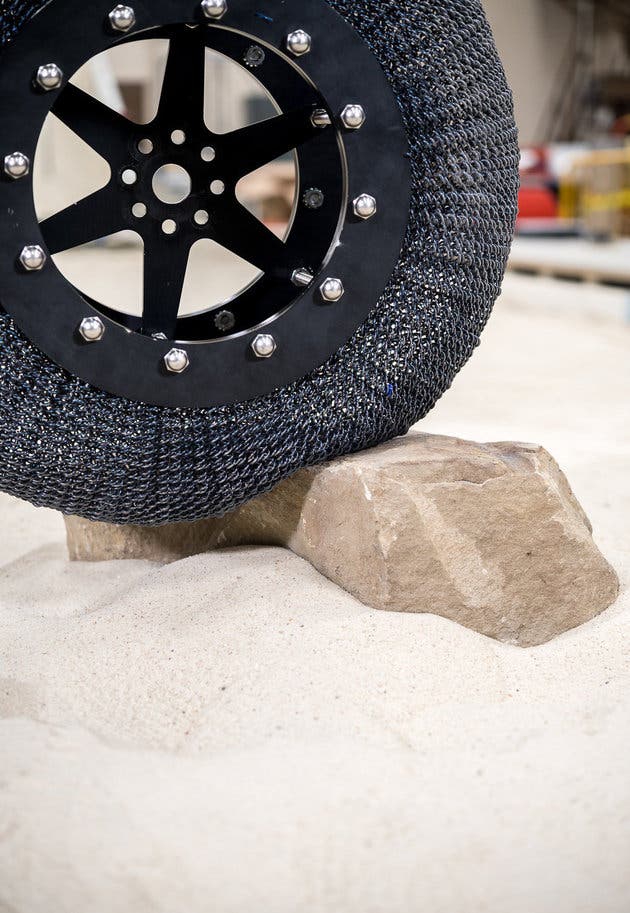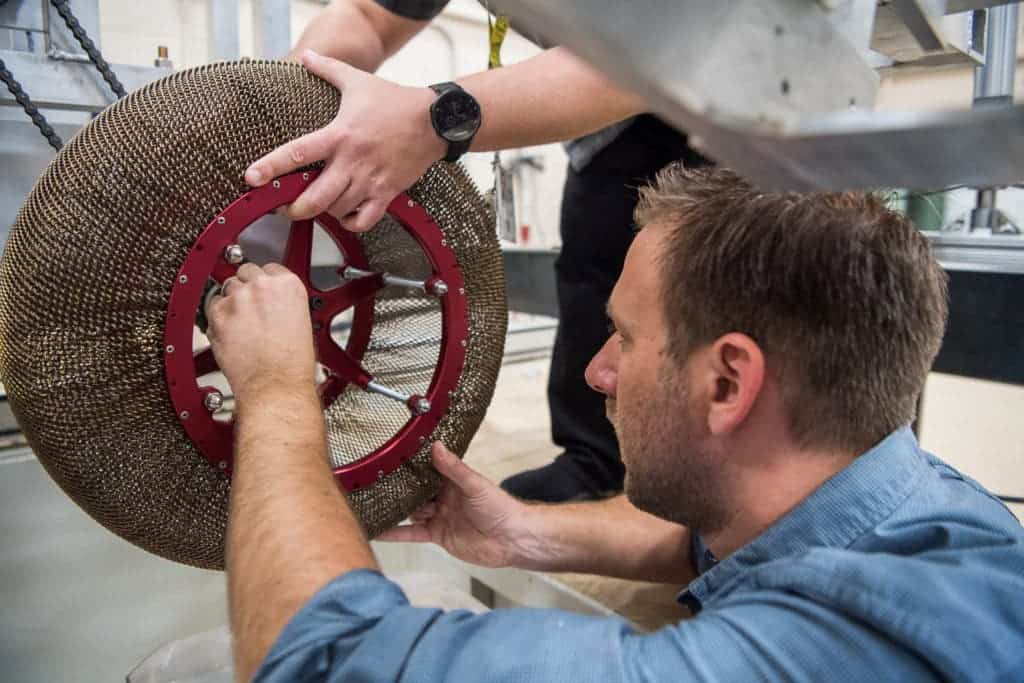Getting a flat tire in the middle of nowhere can be infuriating. You know what’s worse though? A flat tire on Mars, 55 million miles away from the nearest tow truck or car repair shop. NASA doesn’t want to waste hundreds of millions of dollars so its engineers came up with a revolutionary new design for incredibly sturdy tires. The novel tires bend to any shape, even all the way down to the axle, only to return to their initial shape. They’re designed for the next generation of Martian and lunar rovers but could one day make their way into terrestrial applications.

This is a recent SMA tire version that has dense coils, weighs about 20 lbs and can handle 165 lbs of load. Credit: NASA.
After being tasked with designing the wheels for a new lunar lander, NASA engineers first turned to spring steel, just because that’s what seemed to work previously. While such tires work pretty nicely across all sorts of challenging terrain, from sand to mud, the problem is that over time the spring would inevitably suffer plastic deformation (i.e. they get bent or broken). But one serendipitous meeting between NASA engineer Colin Creager and materials scientist Santo Padula changed the course of the project entirely.
Instead of spring steel, Padula’s insight shifted the direction towards a stoichiometric nickel-titanium alloy with phenomenal properties. This particular material doesn’t deform like conventional materials. Typically, stress stretches chemical bonds at the atomic level, but this new alloy does an atomic rearrangement to accommodate deformation. According to Padula, this allows their tire, which is called the Shape Memory Allow Tire, to undergo 30 times the deformation seen in a conventional steel spring without any permanent deformation. “We could never even contemplate this in a conventional metal system,” Padula said.
“There are three major benefits to developing high performing compliant tires that are capable of performing in a Martian or Lunar environment. First, they would allow rovers to explore greater regions of the surface than currently possible. Secondly, because they conform to the terrain and do not sink as much as rigid wheels, they can carry heavier payloads for the same given mass and volume. Lastly, because the compliant tires can absorb energy from impacts at moderate to high speeds, they can be used on crewed exploration vehicles which are expected to move at speeds significantly higher than the current Mars rovers,” a NASA statement informs.

Engineer Colin Creager attaches the latest version of the SMA Spring Tire to a test rig in the SLOPE lab. This version weighs 15 lbs, can carry double the amount of load as the previous version and performs better in the deep space temperatures. Credit: NASA.
The SMA tire was put to the test under a variety of challenging conditions such Mars-like terrain and environment. The team even mounted the special tires on a conventional 4×4 and found these performed wonderfully here on Earth too, as you can see below.
There have been many NASA projects and technologies meant for space exploration that eventually made their way to consumers. Things like baby formula, digital image sensors, or emergency blankets. It wouldn’t be too far-fetched to see SMA tires used here on Earth for some special applications. Until then, we’re very excited to see these tires see action on the moon or even Mars.









